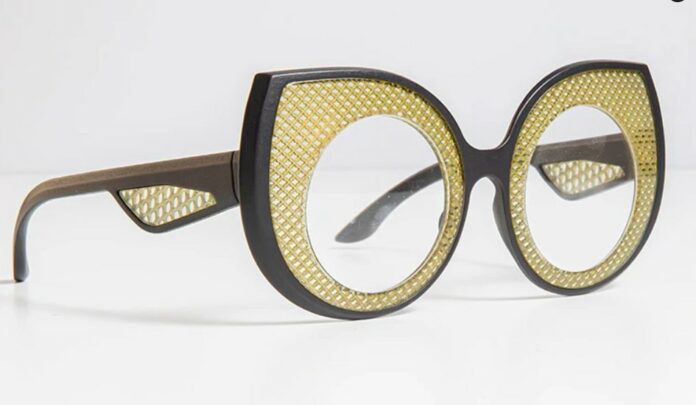Designers can now experiment the possibility of captivating shapes, gradients, textures, and lightweight structures, all while maintaining the timeless appeal of translucent frames
3D printing company Materialise announces the development of a translucent material in its portfolio. The material would enable eyewear manufacturers to merge the design advantages of 3D printing with consumer demand for translucent eyewear collections.
Among the multiple and well-known advantages of Additive Manufacturing for manufacturing eyewear, one often omits to mention the possibility for designers to experiment with form — offering the ability to play with complex shapes, intricate structures, and textures that are impossible to replicate with traditional production techniques.
However, as eyewear manufacturers embraced 3D printing for its exceptional design capabilities, they often encountered a practical limitation: the technology couldn’t replicate the translucent aesthetics traditionally associated with acetate frames. The introduction of a new translucent material would enable designers to move beyond what is possible with acetate using AM.
The new translucent material is the result of five years of extensive trialing of over fifty different materials against the gold standard of established eyewear materials, including tests for bio-compatibility, thermal resilience, and impact resistance, Materialise says.
“The convergence of 3D printing technology with the advent of innovative translucent materials opens up a realm of exhilarating design possibilities for eyewear designers,” said Alireza Parandian, Head of Global Business Strategy, Wearables at Materialise. “In the past decade, 3D printing has introduced a new level of freedom that offers designers unlimited creativity to craft intricate and customized frames. Moving forward, the introduction of translucent materials to the 3D printing palette will bring a new dimension to eyewear aesthetics. These materials, with their ethereal qualities, transform eyeglass frames into works of art, offering a unique interplay of complexity and depth.”
Enabling the ‘online to in-store’ shift
Consumer preferences are moving from isolated online purchasing to in-store, personalized experiences — a shift enabled by digital technologies like Materialise’s ‘Eyewear Fitting Suite.’
Eyewear consumers increasingly want customized products and purchasing experiences. In fact, customization is one of the key drivers identified for the global eyewear market to achieve a CAGR of 8.5% by 2030. With prescription eyewear accounting for an estimated 63% of the market, this means retailers and opticians that customize their services and end products stand to gain a competitive edge.
Materialise’s Eyewear Fitting Suite enables opticians to take a detailed scan of a customer’s face to build an exact 3D digital model. The platform’s app, which can be loaded with retailer’s own collections and with those of collaborating brands, then allows the customer and optician to look at shapes, styles, colors, and size options together, leveraging both professional expertise and digital innovation to select the perfect, custom-fit frame.
Parandian says: “AI and other virtual CX tools are increasingly commonplace online. But not in-store. And that’s still where so many customers are heading to get that one-to-one professional support. However, around 1 in 4 customers who enter a shop looking to purchase new eyewear abandon their search because they are either overwhelmed by choice or can’t find the exact frame to suit their facial features. Our Eyewear Fitting Suite gives customers a better understanding of which frames perfectly match their specific face size, contours, and features and creates a new in-store shopping experience in search of the perfect frame.”
As well as answering consumer needs, the platform means retailers can offer an omnichannel purchasing journey and keep digital inventory for on-demand production — minimizing costly stock risk and potential frame wastage, therefore supporting more sustainable operations. Additionally, as printing is fulfilled at Materialise’s dedicated eyewear production facility, the largest of its kind in Europe, this frees up advisors and opticians to focus entirely on the customer.
Remember, you can post free of charge job opportunities in the AM Industry on 3D ADEPT Media or look for a job via our job board. Make sure to follow us on our social networks and subscribe to our weekly newsletter : Facebook, Twitter, LinkedIn & Instagram ! If you want to be featured in the next issue of our digital magazine or if you hear a story that needs to be heard, make sure to send it to contact@3dadept.com






